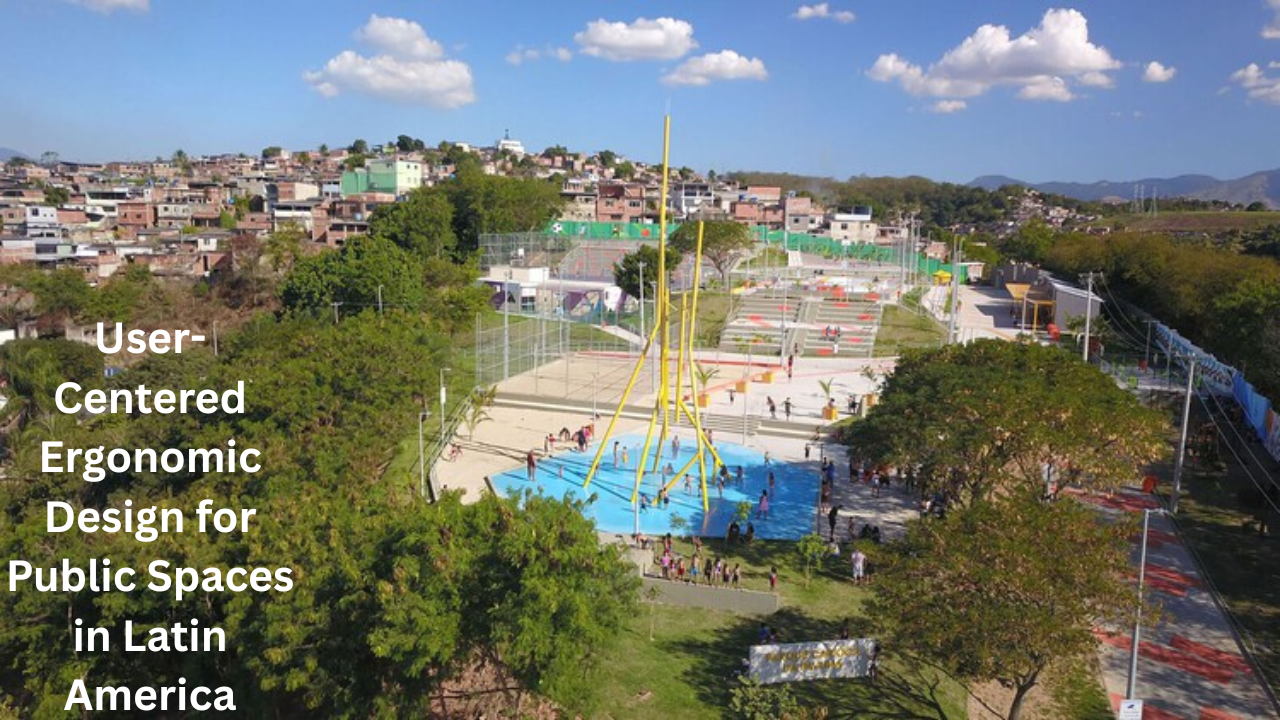
Introduction
Public spaces are at the heart of social, cultural, and economic life in Latin America. However, many of these areas are built without fully considering the needs, behaviors, or limitations of the people who use them daily. The concept of user-centered ergonomic design—a methodology that prioritizes human well-being and interaction—offers a solution for making parks, plazas, transportation hubs, and urban sidewalks more accessible, inclusive, and functional.
In this article, we explore the growing movement toward user-centered ergonomic design in Latin America’s public spaces, key challenges, design principles, successful case studies, and recommendations for embedding this approach into urban policy.
🧩 Overview Table: Key Elements of User-Centered Ergonomic Design in Public Spaces
| Design Element | Current Challenges | User-Centered Solution | Expected Benefit | Example Region |
|---|---|---|---|---|
| Seating & Rest Areas | Infrequent or poorly placed | Biomechanically appropriate, accessible benches | Comfort for elderly & disabled | Bogotá, Colombia |
| Lighting & Visibility | Poor at night; unsafe | Ergonomic lighting design considering eye strain and security | Safety and usability at night | Curitiba, Brazil |
| Wayfinding Systems | Confusing signage or none | Multilingual, icon-based navigation tools | Ease of navigation | Santiago, Chile |
| Accessibility | Obstacles for mobility-impaired users | Ramps, tactile paving, inclusive paths | Equitable access | Buenos Aires, Argentina |
| Public Transport Interfaces | Overcrowded, unclear boarding points | Space planning with flow analysis | Reduced chaos and delays | Mexico City, Mexico |
| Play & Recreational Zones | Lack of inclusive design | Adaptive, age-appropriate, and safe zones | Inclusive engagement | Medellín, Colombia |
What is User-Centered Ergonomic Design?
User-centered design (UCD) is a philosophy and process that involves end-users throughout the design cycle. In ergonomics, it focuses on enhancing physical comfort, cognitive clarity, and emotional satisfaction in the built environment. In the context of Latin America’s public spaces, UCD requires urban planners, designers, and policymakers to think from the perspective of diverse users—young, old, disabled, workers, children, and others.
Principles include:
- Physical and sensory accessibility
- Simplicity in use and navigation
- Comfort, safety, and security
- Inclusiveness across demographics
- Sustainability and cultural relevance
Key Design Challenges in Latin American Public Spaces
1. Urban Inequality and Exclusion
Many Latin American cities have public spaces that exclude vulnerable groups, such as people with disabilities, the elderly, or low-income communities. Poor infrastructure, high crime rates, and lack of maintenance make these areas inaccessible or unsafe.
2. Informality and Overcrowding
Informal street vendors, transport hubs, and dense housing can lead to cluttered, poorly managed spaces. These areas often lack design features that consider human flow, rest needs, and ergonomic safety.
3. Lack of Data-Driven Design
Urban design often relies on aesthetics or outdated models rather than research-based, human-centered design data. Without user input, the result is often ineffective or underused spaces.
Ergonomic Design Principles for Inclusive Public Spaces
A. Anthropometric Fit
Designs must accommodate the full range of human sizes and mobility levels. Seating, pathways, handrails, and public restrooms should be ergonomically appropriate for both children and seniors.
B. Sensory and Cognitive Accessibility
Public environments should cater to those with visual, auditory, or cognitive impairments. This includes clear signage, tactile ground indicators, audio assistance systems, and low-distraction environments.
C. Safety and Emotional Well-Being
Lighting, surveillance, visibility, and crowd flow directly impact perceived and actual safety. Ergonomics here involves designing for psychological comfort, not just physical protection.
D. Participation and Co-Creation
User-centered design invites users to co-create solutions. This means involving communities in choosing design features, identifying problem zones, and suggesting culturally appropriate elements.
Case Studies in Action
1. Medellín, Colombia – Ergonomic Urban Furniture
In Medellín, redesigned parks include multi-height seating, accessible tables, and anti-slip surfaces. Community involvement ensured cultural alignment with local lifestyles.
2. Curitiba, Brazil – Ergonomic Transit Stops
The city’s BRT (Bus Rapid Transit) stations include clearly marked access paths, universal signage, and protected waiting areas. These elements were tested through public feedback loops.
3. Buenos Aires, Argentina – Inclusive Parks
“Plazas Inclusivas” have been designed with inclusive playgrounds, textured paths for the blind, and quiet zones for neurodiverse users. User interviews informed each element.
Implementation Strategies for Governments
- Public Consultations: Include diverse community members in early design phases
- Pilot Projects: Test concepts at small scales in select neighborhoods before large rollouts
- Training Urban Planners: Incorporate ergonomics and user-centered design into professional curricula
- Collaboration with Ergonomists: Include experts in interdisciplinary urban development teams
- Funding Inclusive Innovation: Support ergonomic audits and redesigns through national or municipal programs
Long-Term Benefits
Adopting user-centered ergonomic design leads to:
- Healthier populations, thanks to safer and more supportive environments
- Increased social cohesion, through inclusive and comfortable public engagement
- Economic gains, by attracting tourism, reducing health costs, and boosting local commerce
- Cultural preservation, by respecting and incorporating community traditions into design
Three Best One-Line FAQs
Q: What makes ergonomic design in public spaces different from standard urban planning?
A: It prioritizes the needs and limitations of real users over aesthetic or technical preferences.
Q: Who benefits most from user-centered public design?
A: Vulnerable populations—including children, the elderly, disabled individuals, and informal workers—gain the most.
Q: Can user-centered ergonomics improve safety in Latin American cities?
A: Yes—by reducing hazards and boosting comfort, it enhances both perceived and actual safety.
Conclusion
For Latin America, the transition to user-centered ergonomic public space design is not a luxury—it’s a necessity. By grounding urban planning in the needs of real users, cities can become more inclusive, functional, and vibrant. With greater political will, ergonomic expertise, and public participation, Latin America has the potential to become a global model of human-centered urban development.

